Do Ants Bite or Sting?
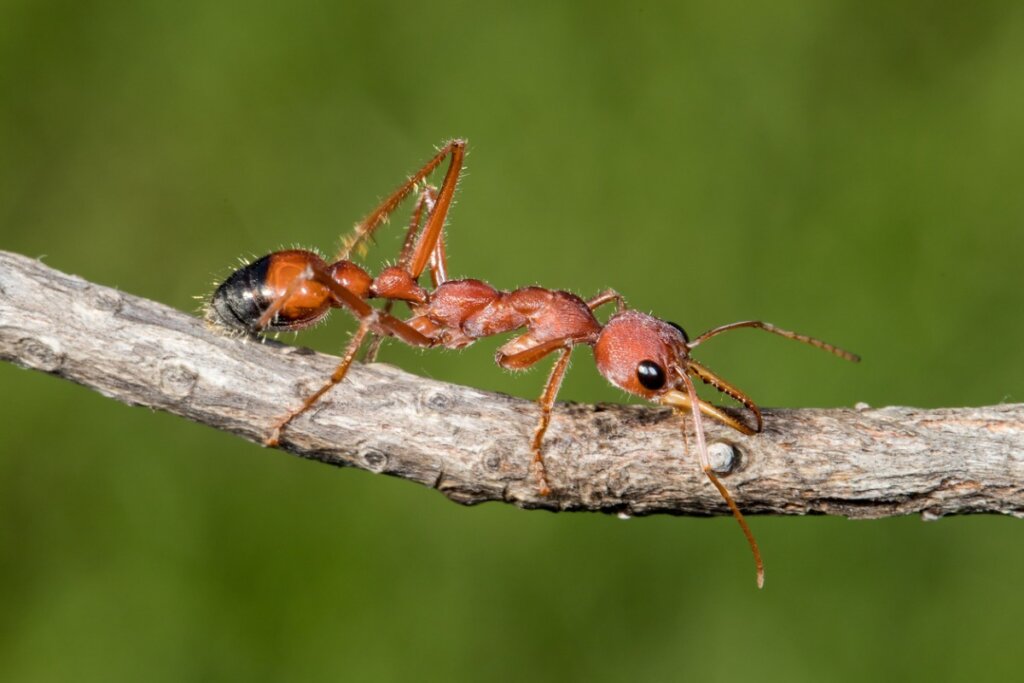
You’ve probably seen a group of ants carrying their food to an opening in a large mound of sand. If you’ve decided to interact with them, or done so accidentally, you may have noticed a small and almost imperceptible sting on your finger. It’s only natural that in this scenario, the following question would arise: Do ants sting or bite?
Ants are fascinating eusocial insects in every way. However, getting too close to a colony of certain species can be very unpleasant for humans. Here, we’ll tell you all about the defense methods of these insects and how to deal with their bites.
What are ants?
The term ant applies to all hymenopterous insects belonging to the family Formicidae. They’re eusocial animals, meaning that they live in a colony composed of castes, and generally, only one specimen (the queen) is capable of laying fertilized eggs. On the other hand, the workers (of which there are hundreds to thousands per anthill) are in charge of taking care of the establishment, looking for food, and protecting the larvae.
Ant colonies are known at a scientific level as superorganisms, as the sum of all the specimens goes far beyond the capacity of each worker or the queen alone. These insects act as a functional unit, and the anthill only collapses when the queen dies (something that can take up to 30 years).
Ants are very successful from an evolutionary point of view. They inhabit almost every ecosystem on Earth and account for up to 25% of the organic animal matter on our planet. More than 22,000 species have been discovered, but only about 13,800 have been accurately described. They’re usually identified taxonomically by the particularities of their antennae.
Ants are close relatives of wasps and bees.
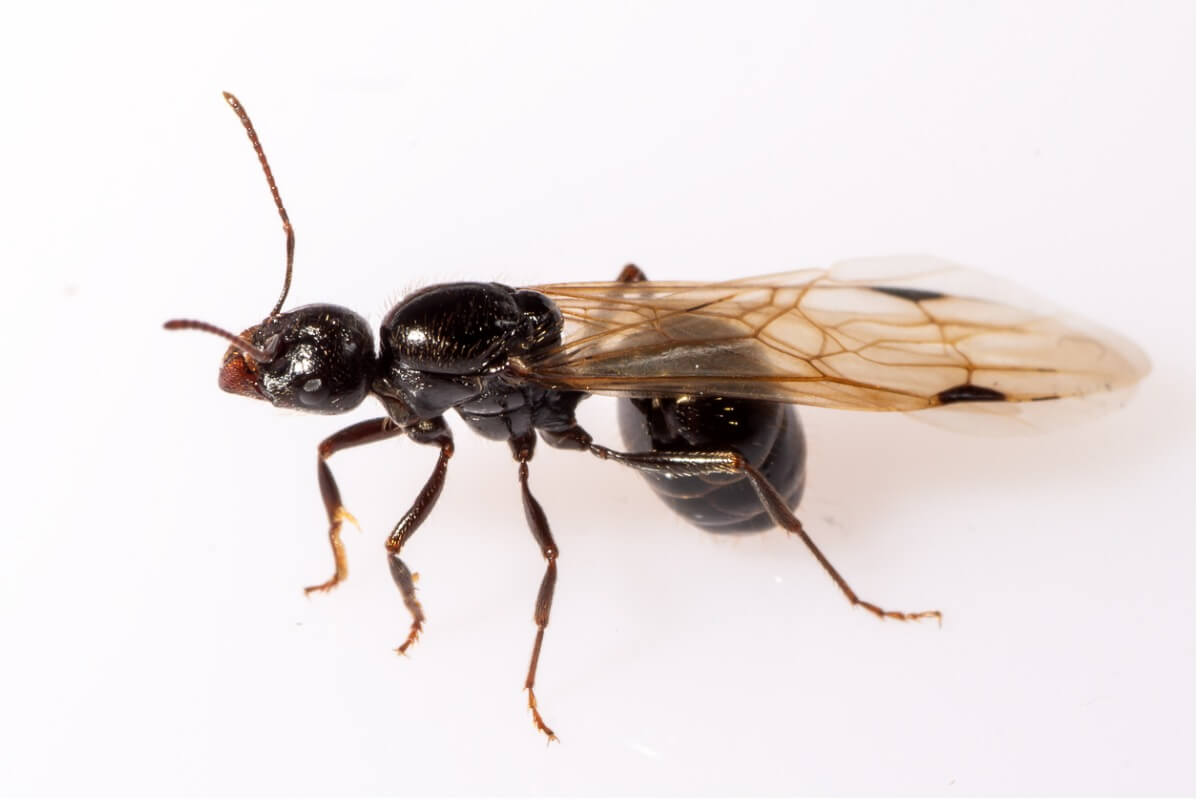
So, do ants sting or bite?
As we’ve said, ants belong to the insect order Hymenoptera. They share taxon with wasps and bees, groups famous for possessing a modified ovipositor in the form of a stinger. This ancestral structure was used to lay eggs. However, in some groups, it developed together with a toxic gland to take on the function of a weapon.
Some ants retain this modified stinger-shaped ovipositor and are able to sting and bite, while others have lost this feature and can only use their mandibles to defend themselves. We’ll show you the methods of attack in the two most famous and abundant subfamilies of ants.
Ants that don’t sting, but do bite (subfamily Formicinae)
The subfamily Formicinae contains about 3030 species of ants, which are distributed over a very wide range of terrestrial habitats. The genera Lasius and Camponotus are the most famous and common in European ecosystems, although there are many more.
These species have tiny stingers (basically vestigial), although they have an enlarged venom gland on their abdomen that has taken on a special function. Although they’re not able to inoculate their sting, this environment has specialized in the synthesis and release of formic acid. This is an excellent method of defense to evade predators.
In addition to this, it is worth noting that some species of the subfamily Formicinae (such as those of the genus Camponotus) have special workers known as majors. These have elongated heads and very powerful jaws that can tear the skin of a human with one bite.
Ants in this subfamily don’t possess a useful stinger, but some castes have very powerful mandibles.
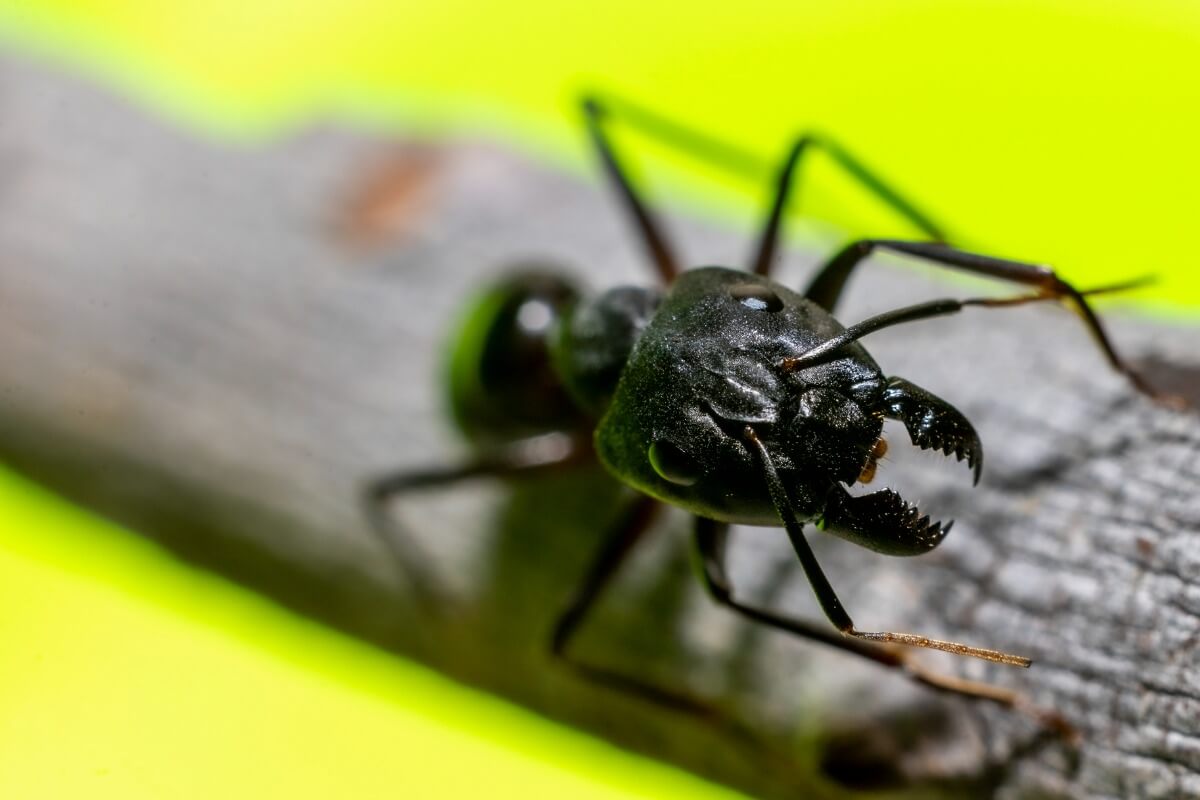
3. Stinging and biting ants (subfamily Ponerinae)
The subfamily Ponerinae is one of the largest subfamilies, with about 1600 species divided into 47 genera, including some of the most beautiful and lethal ants in the world. These species require high humidity and live in Asia and South America. In addition, they usually have nests with few workers (200), their colonies are very unstable, and sometimes reproduction is by hierarchy.
These ants are considered primitive from a biological point of view, and there’s not always a queen per colony, as is usually the case in the species belonging to the subfamily Formicinae. In some species, there’s not even a specific queen (as in the case of Diacamma rugosum), while in others, workers can reproduce if they oust the dominant female.
The ants in this group do have stingers, and some can cause severe allergic reactions after stinging. The species of the genus Odontomachus (known as trap-jaw) are a clear example of this, as there are reports of edema, redness, and a great deal of pain in humans after encountering a worker.
In addition, many of the species included in this group have modified jaws to maximize their effectiveness when hunting. Asian jumping ants (Harpegnathos venator) and the aforementioned trap-jaw ants (Odontomachus bauri, Odontomachus monticola, and Odontomachus clarus, among others) are living examples of this.
Trap-jaw ants close their jaws 2300 times faster than a human blink of an eye.
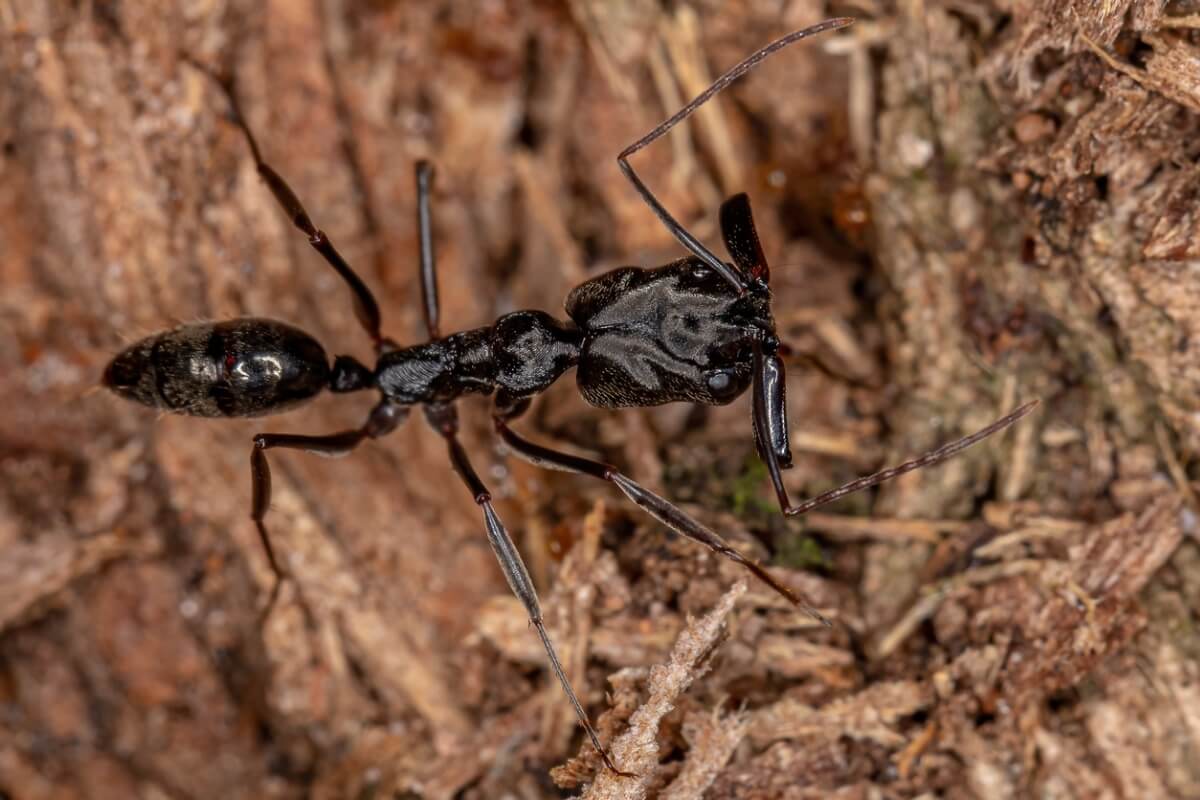
Ants can sting and bite
We’ve presented you with examples of some ants that sting and others that sting and bite at the same time. However, we’ve left out the most lethal insects within this group: The ants belonging to the subfamily Myrmeciinae. Also known as bulldog ants , some of these species have even killed allergic humans with their powerful bites.
The 90 species included in this group are endemic to Australia (one from New Caledonia). They’re extremely aggressive and, as with ponerinae, have a rather unstable caste society. In some species, workers with the ability to reproduce have been recorded.
At least six people have died from the bites of some species of Myrmecia. These ants are noted for their unusual aggressiveness.
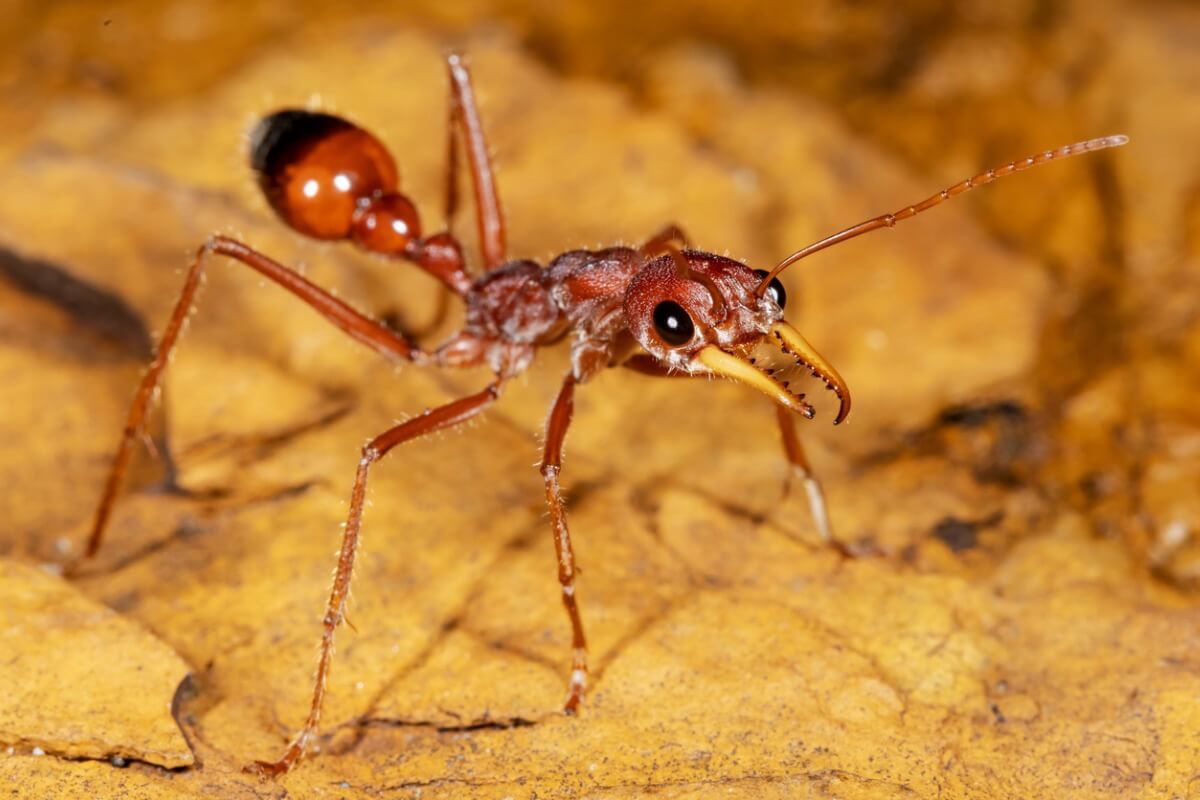
In conclusion, most European ants don’t sting, but they do have castes that possess powerful mandibles that are capable of doing some damage. On the other hand, Asian and tropical specimens of the subfamily Ponerinae (among other taxa) do have stingers and, therefore, will dig them into the skin at the slightest sign of danger.
All cited sources were thoroughly reviewed by our team to ensure their quality, reliability, currency, and validity. The bibliography of this article was considered reliable and of academic or scientific accuracy.
- Camponotus, AntWiki. Recogido a 23 de noviembre en https://www.antwiki.org/wiki/Camponotus
- Ponerinae, AntWiki. Recogido a 23 de noviembre en https://www.antwiki.org/wiki/Ponerinae
